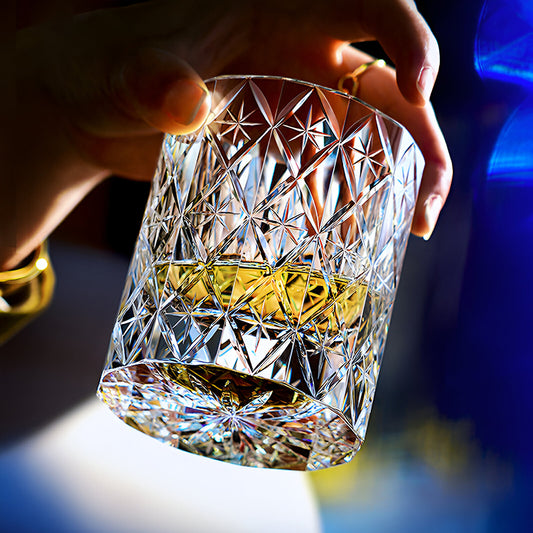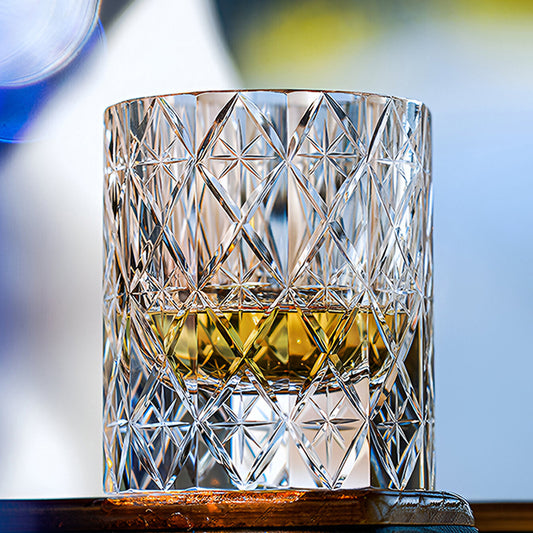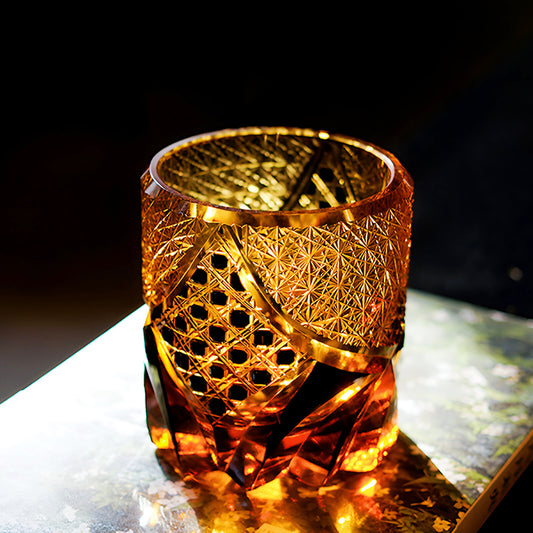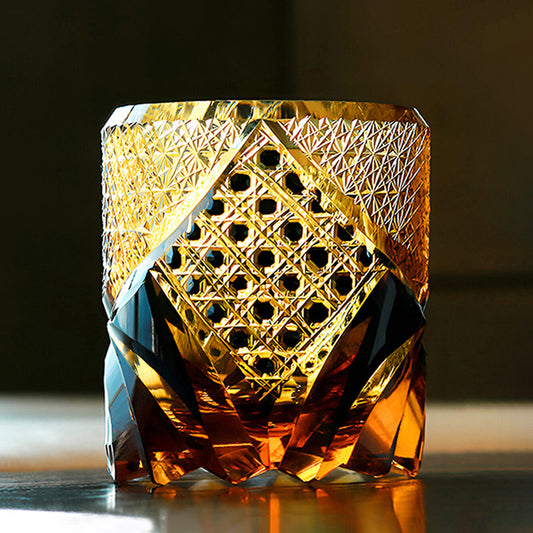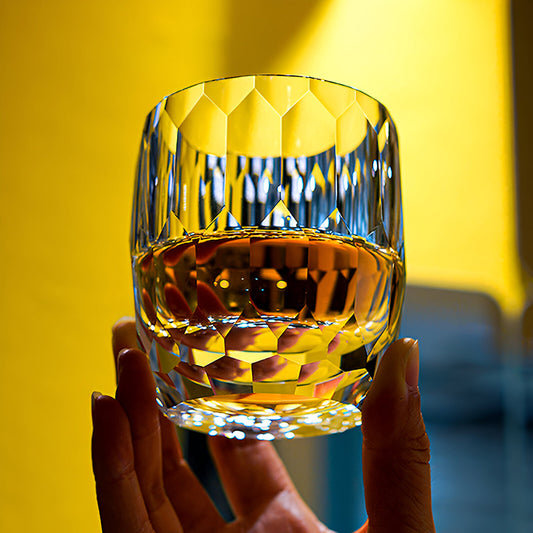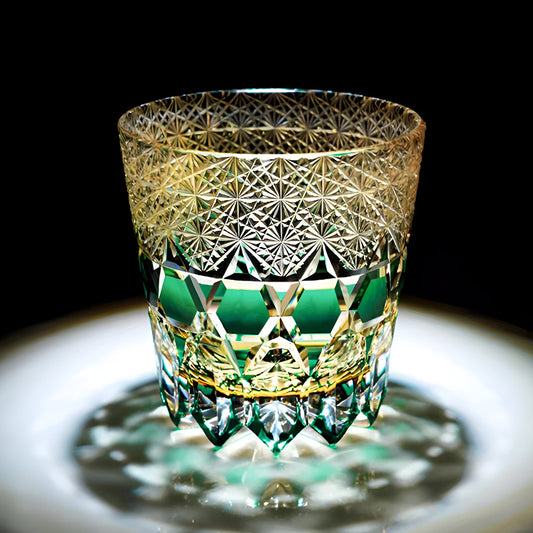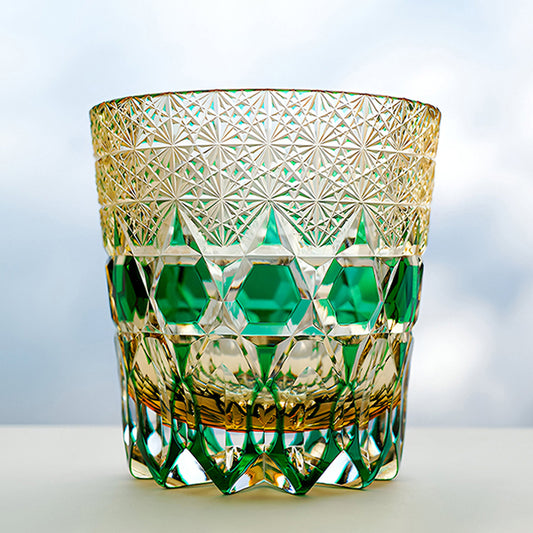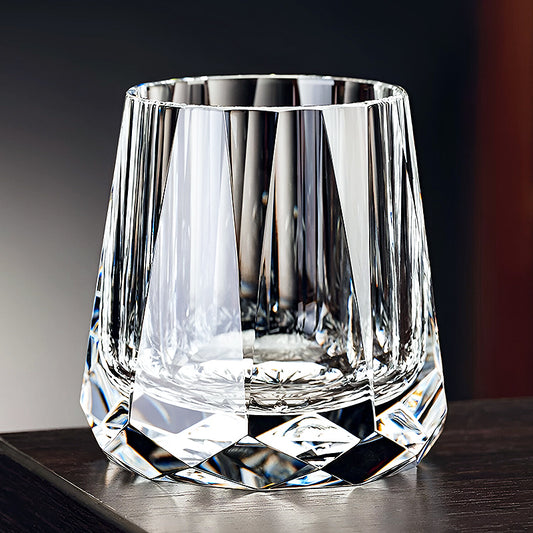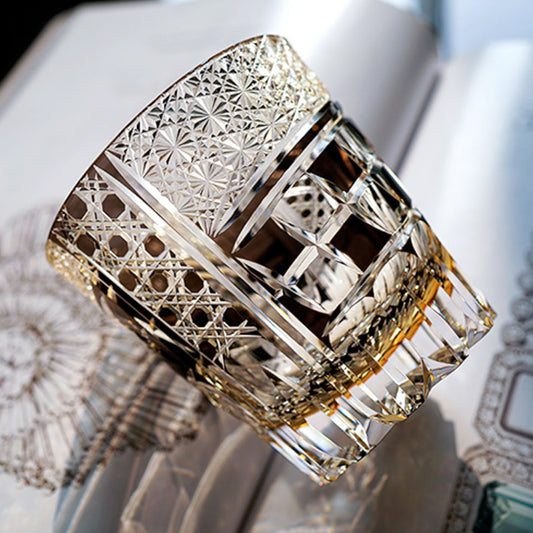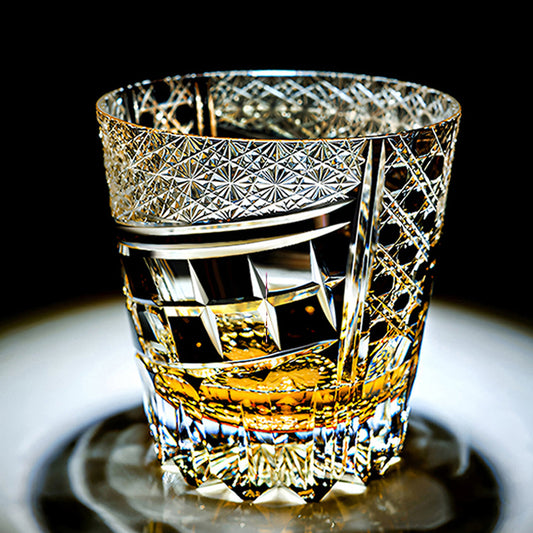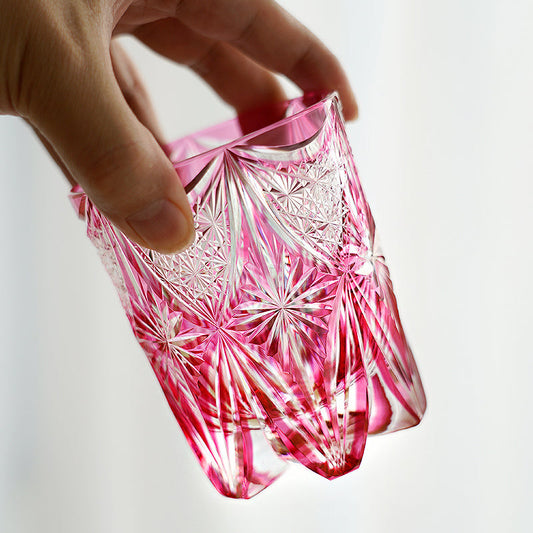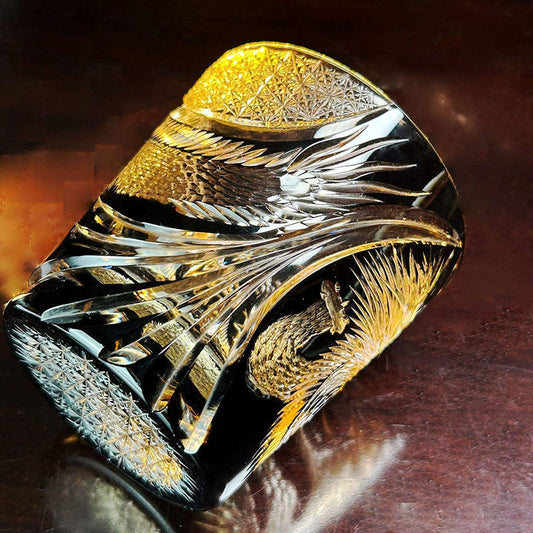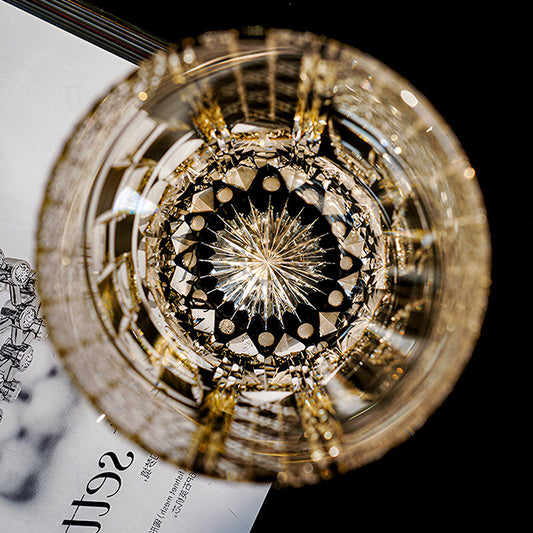Today, there are many types of wine glasses, from simple and modern Nordic crystal glass to classical and elegant Czech carved glasses, and it seems that each one can carry the soul of fine wine. However, why do many whiskey lovers still have a special liking for "Edo Kiriko" made by traditional Japanese craftsmanship? What kind of charm is hidden behind this crystal clear cut light and shadow?
Edo Style: Cutting Art from History
The history of Edo Kiriko can be traced back to the end of the Edo period in the 19th century. In 1834, British missionaries introduced glass cutting technology to Japan. Craftsmen in Edo (now Tokyo) combined this skill with local aesthetics to create a unique "Kiriko" craft. Its name "Kiriko" means "cutting". With intricate and delicate hand-carving, geometric patterns such as chrysanthemum patterns, fish roe patterns, fence patterns, etc. are carved on the surface of the glass. Each line requires decades of skill for craftsmen to master. During the Meiji period, Edo Kiriko was even regarded as a treasured item for nobles and wealthy businessmen, and became a symbol of status and taste. As the Japanese craft master Kobayashi Issa said: "The vessel is the clothing of wine. The true taste can only be seen in the flow of light and shadow."
The soul of craftsmanship: the ultimate pursuit of light, shadow and taste
The essence of Edo Kiriko lies in its natural combination of "skill" and "art". Craftsmen use diamond tools to hand-carve and cut hundreds of facets on the glass surface, which requires both precise force and a deep understanding of light refraction. The thickness of the cup wall and the depth of the lines are strictly calculated to ensure that when the wine is shaken, the light refracts through the Kiriko lines to form bright stars, as if the cup is full of stars.
What's more, this design is not only for visual enjoyment, but also implies practical wisdom: the cutting lines can gently stir the wine, accelerate the contact between whiskey and air, and release the aroma layer by layer; the multi-faceted cutting of the cup mouth allows the wine to flow more evenly over the tip of the tongue, balancing the spicy feeling of alcohol and highlighting the delicate flavor of flowers, fruits and oak barrels. Compared with ordinary flat-mouthed glasses, Edo Kiriko can enhance the layering of single malt whiskey several times, which can be called "the key to awakening the soul of wine."

Scientific evidence: Drink up all the gifts of nature in one glass
Modern research shows that Edo Kiriko is mostly made of lead-free crystal glass, with a silicon dioxide purity of up to 99%. It not only has excellent light transmittance, but also avoids the risk of heavy metal precipitation. The tiny concave and convex surfaces formed by the cutting of the cup body can continuously produce fine bubbles, helping to release the ester aromatic substances in the whiskey. A wine taster once conducted an experimental comparison: the same bottle of Yamazaki 12 years poured into Edo Kiriko and ordinary glasses, the former's aroma complexity increased by 30%, and the sweetness of the aftertaste was also significantly prolonged.
Even more amazing is its cold-keeping performance - the air layer formed by the cutting surface slows down the melting speed of ice cubes. On a hot summer night, Edo Kiriko can still keep the iced whiskey clear after an hour; while the ice cubes in ordinary glasses have long melted into water, diluting the original aroma of the wine.

Between authenticity and fakeness: the persistence of inheritance and craftsmanship
Although Edo Kiriko is highly sought after, there are many machine-pressed imitations on the market. The real Edo Kiriko must be certified by the "Tokyo Traditional Crafts Association", and each piece is signed by the craftsman. The depth and shallowness of the texture, the smoothness of the edges, and even the angle of light and shadow refraction all require decades of practice to achieve. The century-old famous shops such as the old shop "Shinohara Glass" still adhere to full hand-made production. A piece of work requires weeks of hard work by the craftsman. Its value has long surpassed the wine utensils themselves and has become an aesthetic symbol that can be passed down from generation to generation.
From the street workshops in the Edo period to the collections of the world's top bars today, Edo Kiriko uses light and shadow as a pen and craftsmanship as ink to write the tranquility and warmth of oriental aesthetics. It is not only a container for whiskey, but also a bridge connecting history and modernity, art and life. As one collector said: "When you raise your glass, you drink not only wine, but also two hundred years of stars."



